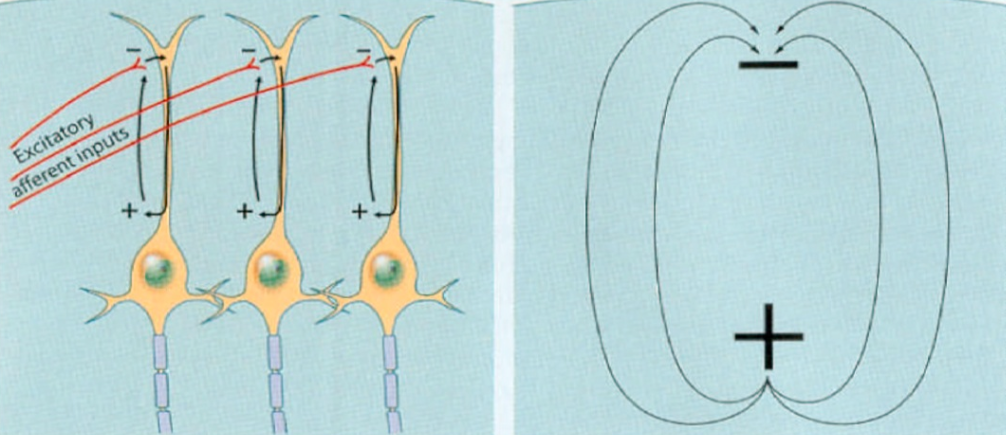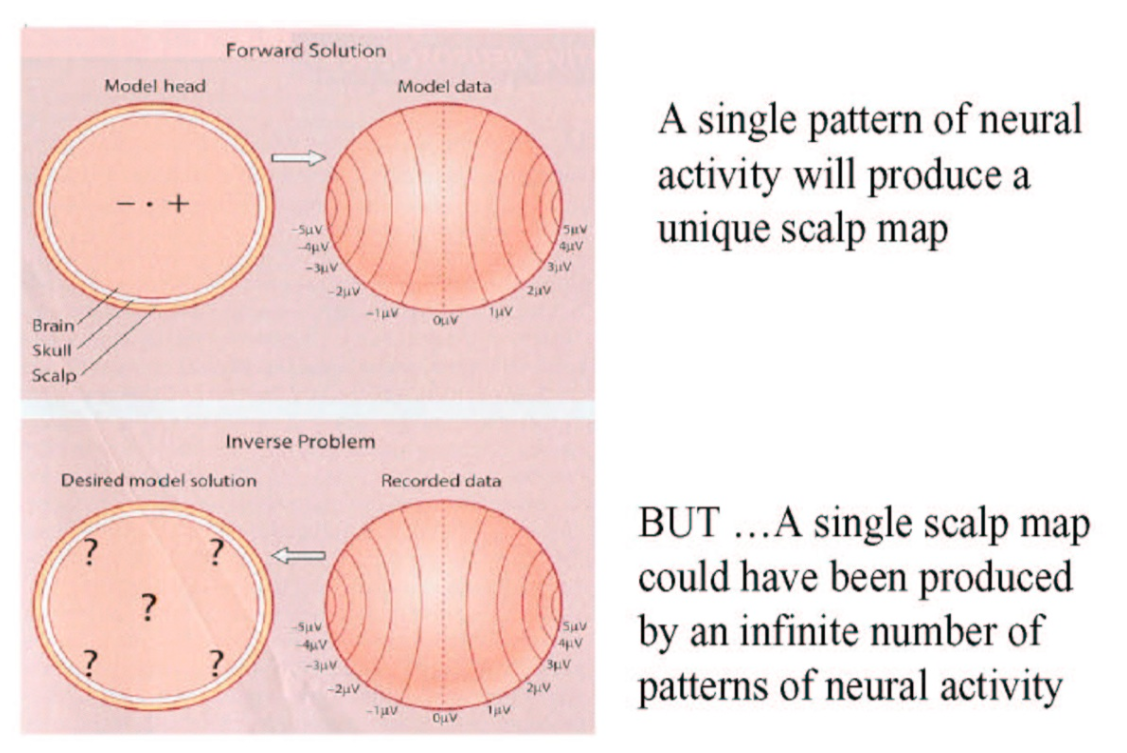1. 1 History
- 1875, observed from exposed brains
- 1914, photographed experimentally induced seizures
- 1934, “human brain waves”,
2. 2 Why measure EEG
Greatest advantage: temporal resolution, EEG can determine electrical activity in different brain regions
3. 3 Physics

Necessary conditions: Aligned neurons and synchronous activity
Acquisition:
- electrode caps
- conductive jelly
- ruler
- EEG amplifier, laptop
4. 4 Data collection
Can tell us: precise timing of neural activity, sequence of mental operations
Can NOT tell us: precise brain location of neural activity
4.1. Analysis
- ERP: time- & phase-locked potentials
- On-going EEG: frequency-domain analysis
4.2. Frequency-domain Analysis
| EEG Bands(Hz) | Distribution | Subjective feeling |
|---|---|---|
| Delta: 0.1-3 | broad or diffused | deep, dreamless sleep |
| Theta: 4-8 | regional, may involve many lobes | intuitive, creative |
| Alpha: 8-12 | regional, usually involves entire lobes | relaxed |
| Gamma: >30 | very localized | focused |
| Beta: 12-30 | localized | alertness |
4.3. Time-Frequency Analysis
apply a ‘window’ to the data, then perform the FFT on this windowed data

5. 5 Challenge
Hard to solve the Inverse Problem:
